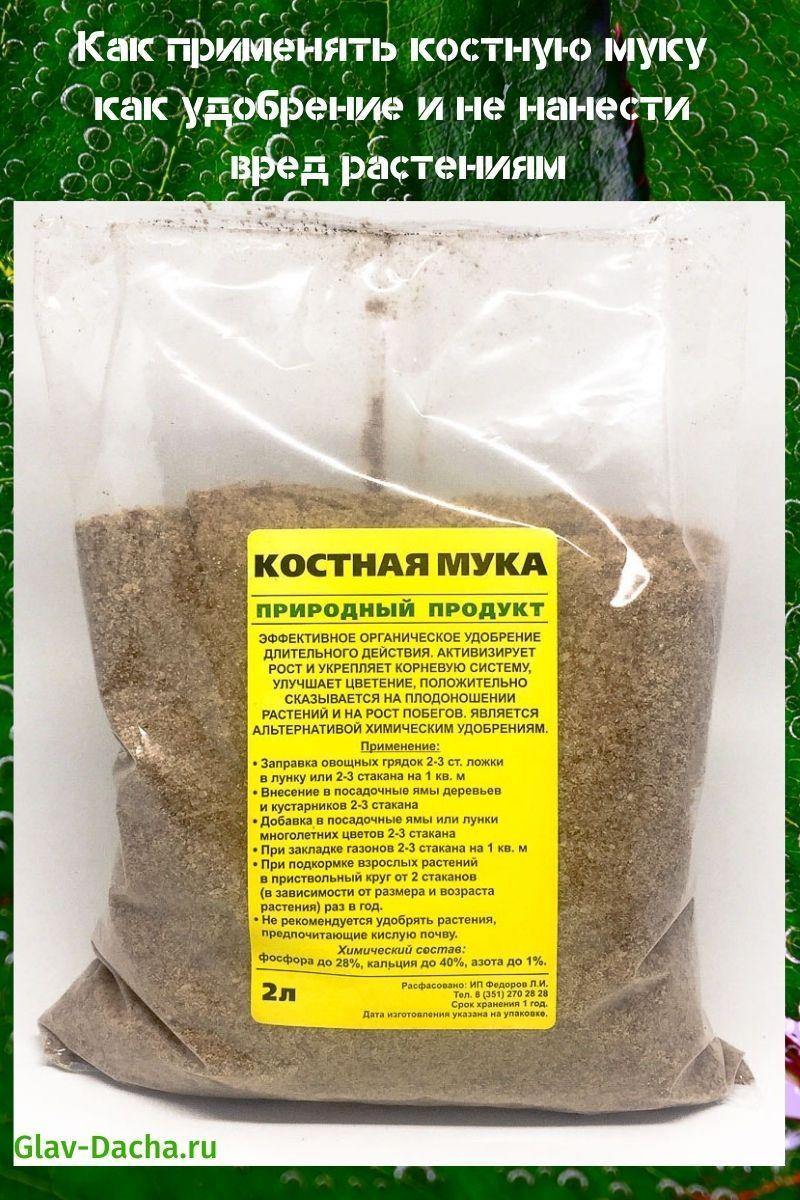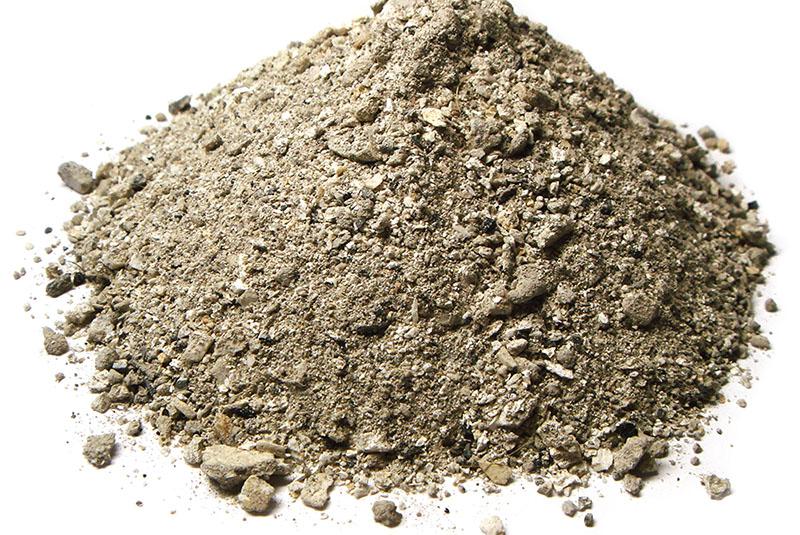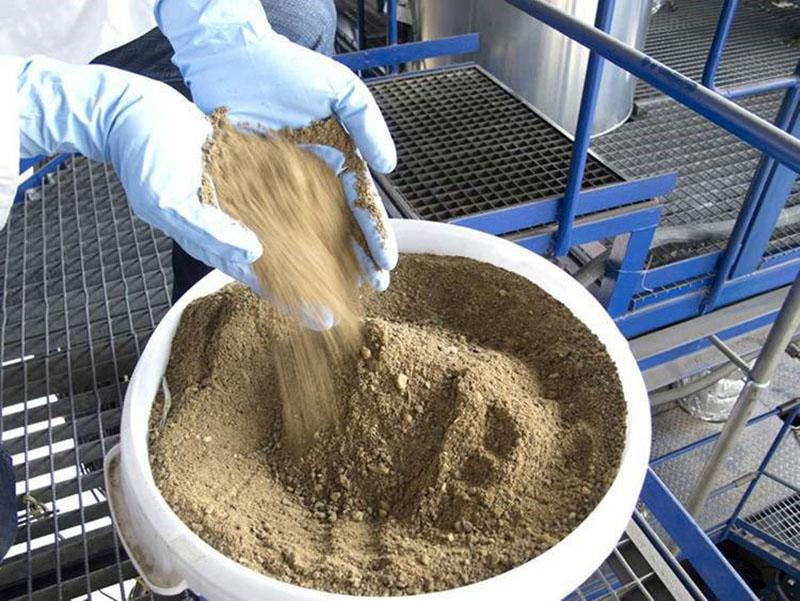How to use bone meal as fertilizer and not harm plants
 For many years, organic feeding has been considered the best way to increase the yield of vegetable and fruit crops. However, it is low in calcium and phosphorus, so we are carefully studying how to use bone meal as a fertilizer in the garden and garden beds. The substance is produced in factories and sold in specialized stores. It is much cheaper than conventional mineral fertilizers and is an environmentally friendly product. In addition, the fertilizer contains a huge amount of elements from the "Periodic Table of Mendeleev". Let's get acquainted with the unique composition of bone meal, which was discovered by modern scientists.
For many years, organic feeding has been considered the best way to increase the yield of vegetable and fruit crops. However, it is low in calcium and phosphorus, so we are carefully studying how to use bone meal as a fertilizer in the garden and garden beds. The substance is produced in factories and sold in specialized stores. It is much cheaper than conventional mineral fertilizers and is an environmentally friendly product. In addition, the fertilizer contains a huge amount of elements from the "Periodic Table of Mendeleev". Let's get acquainted with the unique composition of bone meal, which was discovered by modern scientists.
Powder under a microscope, plant benefits and benefits

In addition, the product found:
- iron;
- magnesium;
- potassium;
- copper;
- zinc;
- cobalt;
- manganese;
- iodine.
 The main advantage of organic matter is considered complete safety. When using bone meal in gardening and in the garden, summer residents only wear gloves. Its subtle, specific smell does not exude harmful vapors and does not cause allergies. Top dressing decomposes within 8 months. One procedure is enough for the season, thanks to which the plants receive minerals in full. In addition, there is never a lot of substance. The leaves do not get burned, and the root system does not rot. And what is bone meal for in the garden and in the garden?
The main advantage of organic matter is considered complete safety. When using bone meal in gardening and in the garden, summer residents only wear gloves. Its subtle, specific smell does not exude harmful vapors and does not cause allergies. Top dressing decomposes within 8 months. One procedure is enough for the season, thanks to which the plants receive minerals in full. In addition, there is never a lot of substance. The leaves do not get burned, and the root system does not rot. And what is bone meal for in the garden and in the garden?
Agronomists highlight several points:
- stimulates root formation;
- enhances immunity;
- protects against pests;
- prepares perennials, berry bushes, fruit trees for wintering;
- affects the abundant formation of buds;
- has a beneficial effect on the taste of fruits and the speed of ripening.
 Although organic fertilizer is a concentrated substance, it does not have to be diluted with water, looking for a suitable storage room. The powder is used at any time of the year, regardless of the growing season of plants. If necessary, apply before harvesting.
Although organic fertilizer is a concentrated substance, it does not have to be diluted with water, looking for a suitable storage room. The powder is used at any time of the year, regardless of the growing season of plants. If necessary, apply before harvesting.
How to use bone meal as a fertilizer for vegetables, fruits and berries
 This organic fertilizer, rich in phosphorus, is ideal for almost all garden plants.
This organic fertilizer, rich in phosphorus, is ideal for almost all garden plants.
Each of them will not hurt:
- reliable root system;
- abundant flowering;
- high-quality fruiting;
- protection in the winter.
The substance is introduced into the soil in the fall, during the digging of the site, or in the spring - directly into the hole immediately before planting. Agronomists advise scattering bone meal on the site at the rate of 100-200 g per m². Put 10-15 g of powder under the plant. Let's consider the feeding procedure in more detail.
If fertilizer is applied in summer or before harvesting, it must be covered with soil.
Potatoes
 For many gardeners, potatoes are the main vegetable crop. It is grown in almost all regions of Russia, Belarus and Ukraine. To obtain a bountiful harvest, bone meal powder is added to the soil. This is usually done in the fall during plowing or digging a vegetable garden.
For many gardeners, potatoes are the main vegetable crop. It is grown in almost all regions of Russia, Belarus and Ukraine. To obtain a bountiful harvest, bone meal powder is added to the soil. This is usually done in the fall during plowing or digging a vegetable garden.
The substance is scattered on the surface according to the standard adopted by agronomists (200 g per m²).If desired, the phosphate fertilizer is placed directly into the hole during potato planting. The option is effective for a small area of the treated area.
Tomatoes
 Almost everyone loves red, yellow and pink tomatoes. They are put in vegetable salads, sauces and simply cut for dinner. However, it takes a lot of effort to grow a vegetable in your garden. Sow seeds, get seedlings and transfer them to open ground. It was at this time that tomato bone meal was used as a fertilizer, which contains an abundance of phosphorus.
Almost everyone loves red, yellow and pink tomatoes. They are put in vegetable salads, sauces and simply cut for dinner. However, it takes a lot of effort to grow a vegetable in your garden. Sow seeds, get seedlings and transfer them to open ground. It was at this time that tomato bone meal was used as a fertilizer, which contains an abundance of phosphorus.
If the bed is prepared in the fall, the substance is scattered over the area in a thin layer, and then the soil is dug up. When planting seedlings, add flour directly to the hole, 3 tablespoons per plant. Then mix it thoroughly with earth. Fill with water, lay a seedling and sprinkle with a dry substrate. Fast, simple and efficient.
At first, tomatoes need an additional dose of nitrogen, which should be applied according to the generally accepted scheme.
Carrot
 To get a juicy and beautiful root crop, you need to work hard. In the fall, the garden is carefully prepared. To improve the quality of the soil, fertilizer (bone meal) is used while loosening the soil. Within a few months, the phosphorus molecules will gradually disintegrate and become a wonderful bait for carrots. In the spring, holes are made on the garden bed, about 10 cm deep. Seeds are sown and sealed. If desired, fertilizer is applied directly to the hole before sowing.
To get a juicy and beautiful root crop, you need to work hard. In the fall, the garden is carefully prepared. To improve the quality of the soil, fertilizer (bone meal) is used while loosening the soil. Within a few months, the phosphorus molecules will gradually disintegrate and become a wonderful bait for carrots. In the spring, holes are made on the garden bed, about 10 cm deep. Seeds are sown and sealed. If desired, fertilizer is applied directly to the hole before sowing.
The crops of beets, cabbage and corn are fertilized in a similar way.
Fruit trees and berry bushes
 Thanks to organic fertilizing containing phosphorus, gardeners receive bountiful harvests of fruits and berries. An important prerequisite is understanding how to use bone meal as a fertilizer for the benefit of plants. What do experts advise?
Thanks to organic fertilizing containing phosphorus, gardeners receive bountiful harvests of fruits and berries. An important prerequisite is understanding how to use bone meal as a fertilizer for the benefit of plants. What do experts advise?
The dose of the substance is calculated based on the height of the fruit tree or shrub that is transplanted. On average, the amount of flour can be from 50 to 250 g.
The powder application procedure consists of simple steps:
- fertilizer is poured onto the bottom of the pit;
- mixed with soil;
- watered with water;
- set a seedling;
- fall asleep with soil;
- compact the root area.
To strengthen the root system of fruit trees and fruit-bearing shrubs, a liquid supplement from bone meal is added once every 3 years. It is prepared in advance so that it is properly infused.
 Then the crops are periodically watered at the root. Thanks to the procedure, the immune system is strengthened and the yield increases. Next, consider where bone meal is used in addition to the garden and vegetable garden.
Then the crops are periodically watered at the root. Thanks to the procedure, the immune system is strengthened and the yield increases. Next, consider where bone meal is used in addition to the garden and vegetable garden.
Houseplants
 Arranging a "winter" garden on the windowsill, flora fans put their soul into it. They water and spray the flowers regularly. If necessary, transplant and organize organic feeding. Bone meal is considered a universal remedy for any indoor culture.
Arranging a "winter" garden on the windowsill, flora fans put their soul into it. They water and spray the flowers regularly. If necessary, transplant and organize organic feeding. Bone meal is considered a universal remedy for any indoor culture.
The substance is applied both in dry and liquid form. The dose is calculated based on the weight of the soil that fits into the pot. For 1 kg of soil, 1 g of phosphorus powder is enough. Liquid fertilizer is prepared from the calculation: 1 g of the substance is put on 1 liter of clean water. As a result, flowering plants emit more buds, while others develop lush greenery.
Bulbous flowers
 When planting tulips, daffodils and lilies at their summer cottage, you should pay attention to organic phosphorus fertilizer (bone meal). The substance is poured directly into the prepared funnel. The dose is 1: 1 relative to soil. It is thoroughly mixed with bone meal, slightly compacted, and then the culture is planted. In the spring, the flower bed will shine with many bright colors.
When planting tulips, daffodils and lilies at their summer cottage, you should pay attention to organic phosphorus fertilizer (bone meal). The substance is poured directly into the prepared funnel. The dose is 1: 1 relative to soil. It is thoroughly mixed with bone meal, slightly compacted, and then the culture is planted. In the spring, the flower bed will shine with many bright colors.
An acidic soil will require an abundance of bone meal to fill it with phosphorus and calcium.
DIY organic powder
 Most often, fertilizer is purchased in specialized stores. However, inveterate farmers create such a "masterpiece" at home.They follow simple instructions provided by experienced gardeners. Let's find out in more detail how to make bone meal for plant nutrition yourself.
Most often, fertilizer is purchased in specialized stores. However, inveterate farmers create such a "masterpiece" at home.They follow simple instructions provided by experienced gardeners. Let's find out in more detail how to make bone meal for plant nutrition yourself.
First of all, they collect or buy the necessary raw materials and a mechanism for grinding them. Then they act according to the following scheme:
- crush bones;

- dry the resulting powder in a dryer or in the sun;
- boiled in a saucepan to reduce fat content;
- crushed again to a uniform texture;

- sent to a centrifuge to completely remove moisture;
- scattered on plastic wrap in a thin layer.
Raw materials are carefully dried in the sun. To do this, it is regularly mixed with hands or with a shovel (depending on the amount of powder). At the last stage, the raw materials are ground again to make flour. Store it in a cool dry place for about 6 months using plastic bags.
So, we learned how to use bone meal as a fertilizer for potatoes, tomatoes and carrots. The scheme is quite simple. Top dressing is applied in autumn when loosening the soil or in spring when planting vegetable crops. Fruit trees and fruit shrubs also need phosphorus substances. Bone meal is applied during plant transplantation or periodically watered the root area. The substance is no less effective for indoor crops. It is used according to the dosage established by specialists. If desired, you can make the powder yourself at home.